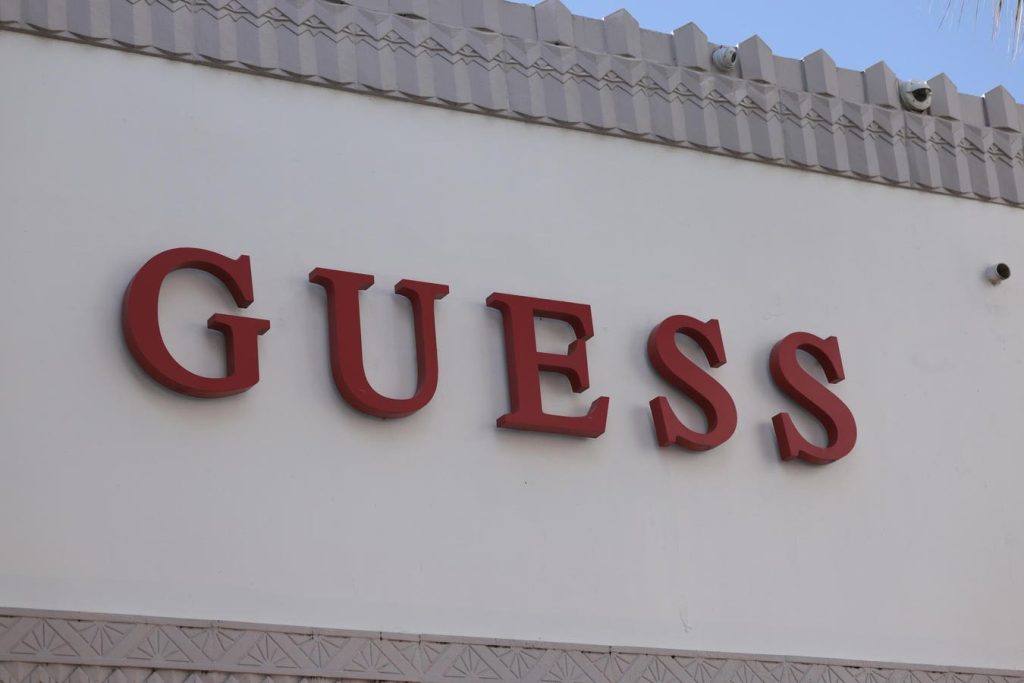Guess?, Inc. (GES), a globally recognized apparel and accessories retailer, has faced significant headwinds in the market, with its stock price plummeting by 40% year-to-date, closing at around $14 on December 30th. This sharp decline stands in stark contrast to the broader market performance, particularly when compared to the S&P 500 index and the 13% appreciation witnessed by its competitor, Gap Inc. This disparity raises the question: what factors are contributing to Guess’s underperformance? A deeper dive into the company’s recent financial performance and market dynamics reveals a complex interplay of challenges and opportunities.
The company’s third-quarter results paint a picture of mixed regional performance. While European markets and Americas wholesale segments demonstrated strength, these gains were offset by declines in the crucial North American and Asian retail sectors. Europe, representing a significant 50% of Guess’s total revenue, experienced robust sales growth. However, this positive momentum was counterbalanced by margin pressure stemming from elevated inventory levels, necessitating markdowns to clear excess stock. Consequently, the company’s operating margin and earnings suffered. Furthermore, repeated downward revisions to the company’s financial guidance by management have eroded investor confidence, contributing to the downward trajectory of the stock price.
Looking ahead, Guess has adjusted its full-year revenue guidance, now projecting growth in the range of 7-8%, down from the previously anticipated 9.5% to 11%. This tempered outlook reflects the challenges the company faces in navigating a dynamic retail landscape. The adjusted EPS outlook has also been revised downwards to $1.85-$2.00, a significant decrease from the previous estimate of $2.42 to $2.70. These adjustments reflect not only the aforementioned margin pressures but also increased investments in marketing to support international expansion and the integration of the recently acquired rag & bone brand. For fiscal year 2025, Guess anticipates GAAP and adjusted operating margins between 6.1% and 6.4%, and 6.2% and 6.5%, respectively.
Despite these challenges, Guess did report a 13% year-over-year increase in sales for Q3, reaching approximately $739 million. This growth was primarily fueled by the inclusion of the New York-based fashion brand, Rag & Bone, into the company’s portfolio. A closer examination of segment performance reveals a nuanced picture: American Wholesale surged by 79% year-over-year, reaching $99 million; Americas Retail grew by 12% to $172 million; European sales increased by 7% to $368 million; Asian sales saw a modest 2% increase to $65 million; and Licensing remained flat. However, the positive impact of the revenue growth was tempered by a 31% year-over-year decline in adjusted earnings to 34 cents per share. This decline was partly mitigated by a reduction in the share count. Furthermore, gross margins contracted by 110 basis points to 43.6%, and the adjusted operating margin decreased by 310 basis points to 5.8%, primarily due to lower gross margins and higher selling, general, and administrative (SG&A) expenses.
Looking towards the future, financial projections estimate Guess’s revenues to reach $3 billion for the fiscal year 2025, representing a 9% year-over-year increase. Based on these revenue projections and anticipated earnings, a revised valuation for Guess’s stock has been set at $18 per share. This valuation is derived from a projected EPS of $1.86 and a price-to-earnings (P/E) multiple of 9.8x for fiscal year 2025. This suggests that, as of December 30th, Guess’s stock may be undervalued, presenting a potential investment opportunity. However, the company’s recent performance and the challenges it faces need to be carefully considered.
The integration of Rag & Bone, while contributing to top-line growth, presents its own set of complexities. Successfully integrating a new brand requires careful management of brand identity, operational synergies, and potential cannibalization of existing brands. The increased marketing investments, while necessary for international expansion and brand building, are impacting short-term profitability. Moreover, the challenging macroeconomic environment, characterized by inflationary pressures and consumer spending concerns, adds another layer of uncertainty to Guess’s outlook. The company’s ability to navigate these challenges and effectively execute its strategic initiatives will be crucial in determining its future success. A comparative analysis with peers and industry benchmarks can offer further insights into Guess’s relative positioning and potential for growth.

